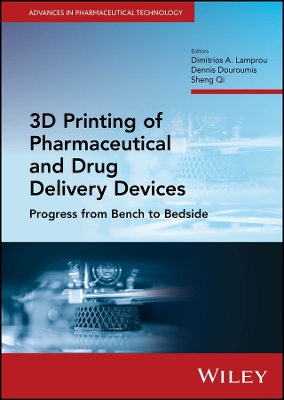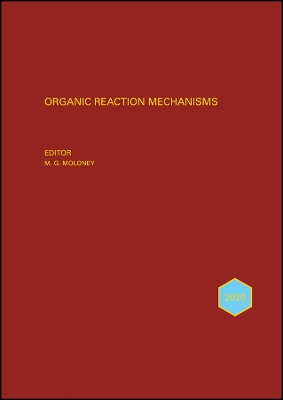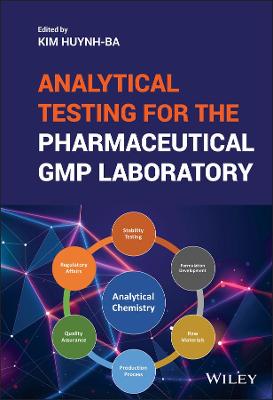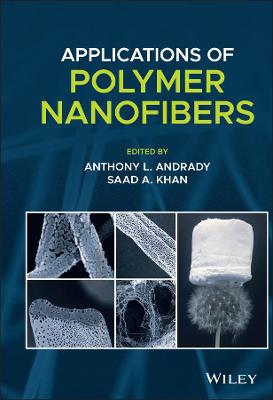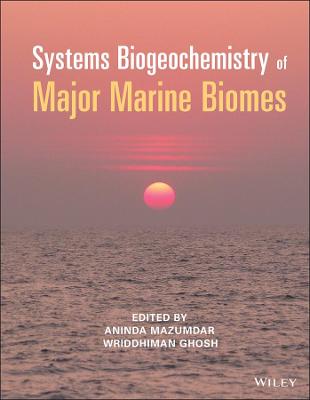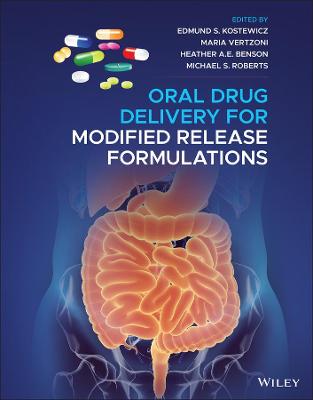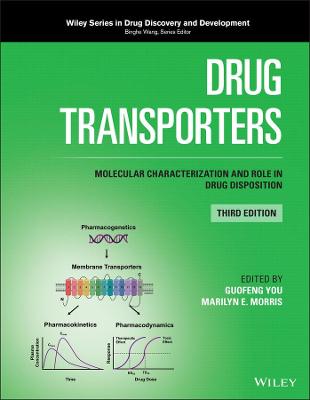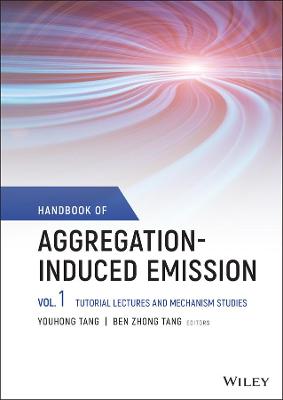Chemistry of Bio-based Polymers
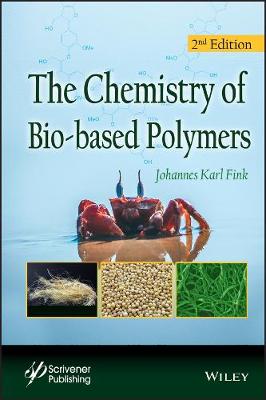 -15%
portes grátis
-15%
portes grátis
Chemistry of Bio-based Polymers
Fink, Johannes Karl
John Wiley & Sons Inc
01/2020
588
Dura
Inglês
9781119681311
15 a 20 dias
884
1 An Overview of Methods and Standards 1
1.1 History of Biodegradable Plastics 1
1.2 Green Chemistry 3
1.2.1 Genetic Engineering 5
1.3 Commercial Situation 8
1.4 Environmental Situation 9
1.4.1 Problems with Bio-based Composites 13
1.4.2 Biodegradation 14
1.5 Properties of Biodegradable Polymers 19
1.6 Special Methods of Synthesis 19
1.6.1 Conventional Methods 19
1.6.2 Click Chemistry 20
1.6.3 Enzymatic Polymerization 21
1.6.4 Chemoenzymatic Polymerization 24
1.6.5 Vine-Twining Polymerization 26
1.6.6 Bacterial Synthesis 28
1.7 Biodegradability Standards 28
1.7.1 Guidelines for the Development of Standards 29
1.7.2 Specifications for Compostable Plastics 32
1.7.3 Ultimate Anaerobic Biodegradability 33
1.7.4 Aerobic Biodegradability 33
1.7.5 Biodegradability of Plastics in Seawater 36
1.8 Test of the Biological Origin 38
References 45
Part I Bio-based Polymers Degradation and Chemistry 57
2 Vinyl-Based Polymers 59
2.1 Polyolefins 59
2.1.1 Degradability 60
2.1.2 Degradation Mechanism 60
2.1.3 Prodegradants 61
2.2 Poly(styrene)Elastomers 63
2.3 Poly(vinyl alcohol) 63
2.3.1 Plasticized Compositions 63
2.3.2 Hydrogels 67
2.3.3 Antibacterial Film 68
2.4 Poly(vinyl butyral) 70
2.4.1 Blends with Poly(3-hydroxybutyrate) 71
2.4.2 Blends with Poly(lactic acid) 72
2.4.3 Paper Coatings 73
2.4.4 Fibers 74
2.4.5 Membranes 75
2.4.6 Solar Cells 77
2.4.7 Adhesive for Safety Glass 79
References 82
3 Acid and Lactone Polymers 87
3.1 Poly(lactic acid) 87
3.1.1 Production Processes 87
3.1.2 Fibers 96
3.1.3 Influence of Fabrication Methods and Kenaf Fiber Length 98
3.1.4 Kenaf Fibers for Reinforcement of PP 99
3.1.5 Films 99
3.1.6 Fertilizer Solutions 101
3.1.7 Reinforced Composites 102
3.1.8 Nanocomposites 103
3.1.9 Membranes 105
3.1.10 Antibacterial Composites 106
3.1.11 Laminated Composites from Kenaf Fiber 107
3.1.12 Copolyesters 108
3.1.13 Transparent Crystalline Poly(lactic acid) 109
3.1.14 Laminated Biocomposites 110
3.2 Poly(glycolic acid)s 111
3.2.1 Glycolic Acid 111
3.2.2 Polymers, Copolymers, and Blends 112
3.2.3 Condensation Polymer of Glycerol 112
3.3 Butyrolactone-Based Vinyl Monomers 114
3.3.1 Tulipalin A 114
3.3.2 ?-Methylene-?-valerolactone 116
3.4 Poly(caprolactone) 119
References 122
4 Ester and Amide Polymers 129
4.1 Poly(ester)s 129
4.1.1 Poly(hydroxyalkonate)s 129
4.1.2 Methyl-10-undecenoate 130
4.1.3 Poly(butylene adipate) Copolyesters 135
4.1.4 Poly(hydroxyalkanoate)s 135
4.1.5 Poly(hydroxybutyrate) 137
4.1.6 Poly(hydroxyvalerate) 139
4.1.7 Poly(3-hydroxyhexanoic acid) 142
4.1.8 Poly(?-hydroxyoctanoate) 145
4.1.9 Poly(?-glutamicacid) 148
4.1.10 Poly(butylene succinate) 150
4.1.11 Dianhydrohexitol-Based Polymers 153
4.1.12 Aliphatic-Aromatic Copolyesters 158
4.1.13 Succinate-Based Polyesters 165
4.1.14 Sebacate-Based Polyesters 165
4.1.15 2,5-Furandicarboxylic Acid-Based Polyesters 169
4.1.16 Unsaturated Polyesters 170
4.1.17 Sulfonated Polyesters 174
4.2 Plant Oil-Based Biopolymers 177
4.2.1 Water Treatment 179
4.2.2 Plant Oils with Acrylic Moities 181
4.2.3 Plant Oils with Phosphorus Moities 182
4.2.4 Vanillin-Based Monomers and Polymers 185
4.2.5 Soybean Oil Epoxidized Acrylate 189
4.2.6 Vegetable Oil Thermosets 190
4.3 Poly(amide)s 192
4.3.1 Soy-Based Bioplastic and Chopped Industrial Hemp 192
4.3.2 Soybean-Based Composites 193
References 203
5 Carbohydrate-Related Polymers 213
5.1 Starch 213
5.1.1 Starch Modification 214
5.1.2 Reactive Dye Removal 218
5.1.3 Starch Granules 219
5.1.4 Baked Foams 224
5.1.5 Starch Composite Foam 226
5.1.6 High Starch Polymer 231
5.1.7 Destructurization of Natural Starch 232
5.1.8 Melt Processable Starch 233
5.1.9 Starch-Based Aerogels 235
5.1.10 Spinning Processes for Starch 236
5.1.11 Pre-gelled Starch Suspensions 239
5.1.12 Processing of Natural Starch 240
5.1.13 Granular Starch as Additive to Conventional Polymers 241
5.2 Cellulose 243
5.2.1 Liquid Crystalline Derivatives 244
5.2.2 Cellulose Fibers 246
5.2.3 Cellulose Nanopapers 253
5.2.4 Modified Cellulose Fibers 256
5.3 Cellulose Ethers 259
5.4 Nonionic Cellulose Ethers 262
5.5 Cellulose Esters 263
5.6 Cellulose Ether Esters 265
5.7 Lignin 267
5.7.1 Lignocellulose Biorefinery 269
5.7.2 Acid Hydrolysis 271
5.7.3 Alkaline Hydrolysis 272
5.7.4 Enzymatic Hydrolysis 273
5.7.5 Reductive or Oxidative Fractionation 273
5.7.6 Combined Pretreatment Methods 274
5.7.7 Pyrolysis 275
5.7.8 Acidic Conversion 277
5.7.9 Reductive Conversion 277
5.7.10 Oxidative Conversion 277
5.8 Biodegradable Nanocomposites 278
5.8.1 Oxidation of Spruce and Pulps 279
5.8.2 Modified Cellulose Nanofibers 280
5.8.3 Bio-based Epoxy Nanocomposites 281
5.9 Chitin 281
References 286
6 Other Polymer Types 297
6.1 Terpenes 297
6.1.1 Grafted Terpene 297
6.1.2 Thiol-ene Additions 298
6.1.3 Pinenes 299
6.2 Poly(urethane)s 304
6.2.1 Poly(ester urethane)s 305
6.3 Cationic Lipopolymers 306
6.4 Plastics from Bacteria 307
6.4.1 Poly(?-hydroxyalkanoate)s 307
6.5 Bio-based Epoxy Resins 310
6.5.1 Poloxamers 311
6.6 Phosphate-Containing Polymers 312
6.7 Polyketals 320
6.8 Biorubber 322
6.9 Collagen 323
6.10 Pyridinium Modified Polymers 324
6.11 Commercial Biodegradable Polymers 325
References 327
Part II Applications 331
7 Packaging, Food Applications and Foams 333
7.1 Packaging 333
7.1.1 Packaging Materials 333
7.1.2 Lightweight Compostable Packaging 334
7.1.3 Laminate Coatings 335
7.1.4 PLA Resins 336
7.1.5 Protein-Derived Bionanocomposites 337
7.1.6 Lignocellulose 338
7.1.7 Tannic Acid 338
7.1.8 Starch Compositions 340
7.1.9 Heat-Sealable Paperboard 349
7.1.10 Packages with Corrosion Inhibitor 350
7.1.11 Multiwall Package 351
7.1.12 Cushioning Nuggets 352
7.1.13 Fluid Containers 353
7.2 Fibers and Nets 356
7.2.1 Multicomponent Fiber 356
7.2.2 Biodegradable Netting 357
7.2.3 Electrospun Nanofibrous Mat 358
7.3 Foams 359
7.3.1 Foamed Articles 360
7.3.2 Blends 361
7.3.3 Starch-Polyester Graft Copolymer 361
7.3.4 Foamed Gelling Hydrocolloids 361
7.4 Biodegradable Adhesive Compositions 366
7.5 Food Applications 367
7.5.1 Edible Packaging 367
7.5.2 Canola Protein-Based Biodegradable Packaging 368
7.6 Other Applications 369
7.6.1 Chewing Gum 369
7.6.2 Astaxanthin 369
7.6.3 Edible Films and Coatings 371
References 375
8 Medical Applications 383
8.1 Drug Delivery 383
8.1.1 Acacia 388
8.1.2 PLA and PLGA Copolymers 392
8.1.3 Poly(? -glutamic acid) 393
8.1.4 Carrageenan 394
8.1.5 Cellulose 395
8.1.6 Chitosan 396
8.1.7 Gellan Gum 396
8.1.8 Guar Gum 398
8.1.9 Hyaluronic Acid Derivatives 398
8.1.10 Khaya Gum 401
8.1.11 Locust Bean Gum 401
8.1.12 Pectin 402
8.1.13 Xanthan Gum 403
8.1.14 Tragacanth Gum 403
8.1.15 Electrospinning 405
8.1.16 Mucoadhesive Drug Delivery 412
8.2 Tissue Engineering 414
8.2.1 Scaffolds for Tissue Engineering 414
8.2.2 3D Bioprinting 417
8.2.3 Periodontal Tissue Engineering 418
8.2.4 Cell Carriers 419
8.3 Tissue Markers 419
8.4 Hydrogels 422
8.5 Microporous Materials 423
8.6 Implants 426
8.6.1 Inflammatory Problems with Implants 427
8.6.2 Eye Implants 430
8.6.3 Thermosetting Implants 434
8.6.4 Neurotoxin Implants 438
8.6.5 Water-Soluble Glass Fibers 438
8.6.6 Bone Repair 439
8.7 Shape Memory Polymers 442
8.7.1 Shape Memory Polyesters 444
8.8 Stents 444
8.8.1 Surface Erosion 447
8.8.2 Tubular Main Body 448
8.8.3 Multilayer Stents 449
8.9 Thermogelling Materials 450
8.10 Cancer Therapy 451
8.10.1 Anticancer Peptide 451
8.10.2 Synergistic Cancer Therapy 452
8.11 Wound Dressings 452
8.12 Bioceramics 453
8.13 Conjugates 454
References 456
9 Personal Care and Sanitary Goods 465
9.1 Breathable Biodegradable Composition 465
9.2 Personal Hygiene Applications 465
9.3 Sanitary Goods 466
9.4 Superabsorbent Materials 469
References 473
10 Miscellaneous Applications 475
10.1 Flooring Materials 475
10.2 Abrasives and Polishing Compositions 479
10.2.1 Cleansers 479
10.2.2 Polishing Pads 482
10.3 Lubricants 484
10.4 Renewable Cards 485
10.5 Biodegradable Irrigation Pipe 487
10.6 Thermosensitive Material 488
10.7 Biodegradable Scale Inhibitors 491
10.7.1 Phosphorus-Containing Polymer 491
10.8 Nanocomposites 492
10.9 Molded Articles from Fruit Residues 493
10.10 Fluorescent Biodegradable Particles 493
10.11 Test Cylinder Mold for Testing Concrete 496
10.12 Flexographic Inks 496
10.13 Audio Systems 498
10.14 Automotive Uses 499
10.15 Oil Well Environment 500
10.16 Green Hot Melt Adhesives 501
10.17 Mechanistic Studies 501
10.17.1OlefinIsomerization 501
References 504
11 Biofuels 507
11.1 Xenobiotics 507
11.2 Biopolymers 508
11.2.1 Poly(l-lactide) 508
11.3 Bioethanol 510
11.3.1 Pretreatment Methods 512
11.3.2 Cellulases and Hemicellulases 514
11.3.3 Production from Starch 516
11.3.4 Production from Lignocellulose 517
11.3.5 Production from Lichenan 518
11.3.6 Production from Other Sources 520
11.4 Biobutanol 523
11.5 Biodiesel 530
11.5.1 Transesterification Methods 531
11.5.2 Production from Microalgae Beats 533
11.5.3 Two-Step Catalytic Conversion 533
11.5.4 Improvement of Diesel Fuel Properties by Terpenes 534
References 537
Index 543
Tradenames 543
Acronyms 550
Chemicals 553
General Index 564
1 An Overview of Methods and Standards 1
1.1 History of Biodegradable Plastics 1
1.2 Green Chemistry 3
1.2.1 Genetic Engineering 5
1.3 Commercial Situation 8
1.4 Environmental Situation 9
1.4.1 Problems with Bio-based Composites 13
1.4.2 Biodegradation 14
1.5 Properties of Biodegradable Polymers 19
1.6 Special Methods of Synthesis 19
1.6.1 Conventional Methods 19
1.6.2 Click Chemistry 20
1.6.3 Enzymatic Polymerization 21
1.6.4 Chemoenzymatic Polymerization 24
1.6.5 Vine-Twining Polymerization 26
1.6.6 Bacterial Synthesis 28
1.7 Biodegradability Standards 28
1.7.1 Guidelines for the Development of Standards 29
1.7.2 Specifications for Compostable Plastics 32
1.7.3 Ultimate Anaerobic Biodegradability 33
1.7.4 Aerobic Biodegradability 33
1.7.5 Biodegradability of Plastics in Seawater 36
1.8 Test of the Biological Origin 38
References 45
Part I Bio-based Polymers Degradation and Chemistry 57
2 Vinyl-Based Polymers 59
2.1 Polyolefins 59
2.1.1 Degradability 60
2.1.2 Degradation Mechanism 60
2.1.3 Prodegradants 61
2.2 Poly(styrene)Elastomers 63
2.3 Poly(vinyl alcohol) 63
2.3.1 Plasticized Compositions 63
2.3.2 Hydrogels 67
2.3.3 Antibacterial Film 68
2.4 Poly(vinyl butyral) 70
2.4.1 Blends with Poly(3-hydroxybutyrate) 71
2.4.2 Blends with Poly(lactic acid) 72
2.4.3 Paper Coatings 73
2.4.4 Fibers 74
2.4.5 Membranes 75
2.4.6 Solar Cells 77
2.4.7 Adhesive for Safety Glass 79
References 82
3 Acid and Lactone Polymers 87
3.1 Poly(lactic acid) 87
3.1.1 Production Processes 87
3.1.2 Fibers 96
3.1.3 Influence of Fabrication Methods and Kenaf Fiber Length 98
3.1.4 Kenaf Fibers for Reinforcement of PP 99
3.1.5 Films 99
3.1.6 Fertilizer Solutions 101
3.1.7 Reinforced Composites 102
3.1.8 Nanocomposites 103
3.1.9 Membranes 105
3.1.10 Antibacterial Composites 106
3.1.11 Laminated Composites from Kenaf Fiber 107
3.1.12 Copolyesters 108
3.1.13 Transparent Crystalline Poly(lactic acid) 109
3.1.14 Laminated Biocomposites 110
3.2 Poly(glycolic acid)s 111
3.2.1 Glycolic Acid 111
3.2.2 Polymers, Copolymers, and Blends 112
3.2.3 Condensation Polymer of Glycerol 112
3.3 Butyrolactone-Based Vinyl Monomers 114
3.3.1 Tulipalin A 114
3.3.2 ?-Methylene-?-valerolactone 116
3.4 Poly(caprolactone) 119
References 122
4 Ester and Amide Polymers 129
4.1 Poly(ester)s 129
4.1.1 Poly(hydroxyalkonate)s 129
4.1.2 Methyl-10-undecenoate 130
4.1.3 Poly(butylene adipate) Copolyesters 135
4.1.4 Poly(hydroxyalkanoate)s 135
4.1.5 Poly(hydroxybutyrate) 137
4.1.6 Poly(hydroxyvalerate) 139
4.1.7 Poly(3-hydroxyhexanoic acid) 142
4.1.8 Poly(?-hydroxyoctanoate) 145
4.1.9 Poly(?-glutamicacid) 148
4.1.10 Poly(butylene succinate) 150
4.1.11 Dianhydrohexitol-Based Polymers 153
4.1.12 Aliphatic-Aromatic Copolyesters 158
4.1.13 Succinate-Based Polyesters 165
4.1.14 Sebacate-Based Polyesters 165
4.1.15 2,5-Furandicarboxylic Acid-Based Polyesters 169
4.1.16 Unsaturated Polyesters 170
4.1.17 Sulfonated Polyesters 174
4.2 Plant Oil-Based Biopolymers 177
4.2.1 Water Treatment 179
4.2.2 Plant Oils with Acrylic Moities 181
4.2.3 Plant Oils with Phosphorus Moities 182
4.2.4 Vanillin-Based Monomers and Polymers 185
4.2.5 Soybean Oil Epoxidized Acrylate 189
4.2.6 Vegetable Oil Thermosets 190
4.3 Poly(amide)s 192
4.3.1 Soy-Based Bioplastic and Chopped Industrial Hemp 192
4.3.2 Soybean-Based Composites 193
References 203
5 Carbohydrate-Related Polymers 213
5.1 Starch 213
5.1.1 Starch Modification 214
5.1.2 Reactive Dye Removal 218
5.1.3 Starch Granules 219
5.1.4 Baked Foams 224
5.1.5 Starch Composite Foam 226
5.1.6 High Starch Polymer 231
5.1.7 Destructurization of Natural Starch 232
5.1.8 Melt Processable Starch 233
5.1.9 Starch-Based Aerogels 235
5.1.10 Spinning Processes for Starch 236
5.1.11 Pre-gelled Starch Suspensions 239
5.1.12 Processing of Natural Starch 240
5.1.13 Granular Starch as Additive to Conventional Polymers 241
5.2 Cellulose 243
5.2.1 Liquid Crystalline Derivatives 244
5.2.2 Cellulose Fibers 246
5.2.3 Cellulose Nanopapers 253
5.2.4 Modified Cellulose Fibers 256
5.3 Cellulose Ethers 259
5.4 Nonionic Cellulose Ethers 262
5.5 Cellulose Esters 263
5.6 Cellulose Ether Esters 265
5.7 Lignin 267
5.7.1 Lignocellulose Biorefinery 269
5.7.2 Acid Hydrolysis 271
5.7.3 Alkaline Hydrolysis 272
5.7.4 Enzymatic Hydrolysis 273
5.7.5 Reductive or Oxidative Fractionation 273
5.7.6 Combined Pretreatment Methods 274
5.7.7 Pyrolysis 275
5.7.8 Acidic Conversion 277
5.7.9 Reductive Conversion 277
5.7.10 Oxidative Conversion 277
5.8 Biodegradable Nanocomposites 278
5.8.1 Oxidation of Spruce and Pulps 279
5.8.2 Modified Cellulose Nanofibers 280
5.8.3 Bio-based Epoxy Nanocomposites 281
5.9 Chitin 281
References 286
6 Other Polymer Types 297
6.1 Terpenes 297
6.1.1 Grafted Terpene 297
6.1.2 Thiol-ene Additions 298
6.1.3 Pinenes 299
6.2 Poly(urethane)s 304
6.2.1 Poly(ester urethane)s 305
6.3 Cationic Lipopolymers 306
6.4 Plastics from Bacteria 307
6.4.1 Poly(?-hydroxyalkanoate)s 307
6.5 Bio-based Epoxy Resins 310
6.5.1 Poloxamers 311
6.6 Phosphate-Containing Polymers 312
6.7 Polyketals 320
6.8 Biorubber 322
6.9 Collagen 323
6.10 Pyridinium Modified Polymers 324
6.11 Commercial Biodegradable Polymers 325
References 327
Part II Applications 331
7 Packaging, Food Applications and Foams 333
7.1 Packaging 333
7.1.1 Packaging Materials 333
7.1.2 Lightweight Compostable Packaging 334
7.1.3 Laminate Coatings 335
7.1.4 PLA Resins 336
7.1.5 Protein-Derived Bionanocomposites 337
7.1.6 Lignocellulose 338
7.1.7 Tannic Acid 338
7.1.8 Starch Compositions 340
7.1.9 Heat-Sealable Paperboard 349
7.1.10 Packages with Corrosion Inhibitor 350
7.1.11 Multiwall Package 351
7.1.12 Cushioning Nuggets 352
7.1.13 Fluid Containers 353
7.2 Fibers and Nets 356
7.2.1 Multicomponent Fiber 356
7.2.2 Biodegradable Netting 357
7.2.3 Electrospun Nanofibrous Mat 358
7.3 Foams 359
7.3.1 Foamed Articles 360
7.3.2 Blends 361
7.3.3 Starch-Polyester Graft Copolymer 361
7.3.4 Foamed Gelling Hydrocolloids 361
7.4 Biodegradable Adhesive Compositions 366
7.5 Food Applications 367
7.5.1 Edible Packaging 367
7.5.2 Canola Protein-Based Biodegradable Packaging 368
7.6 Other Applications 369
7.6.1 Chewing Gum 369
7.6.2 Astaxanthin 369
7.6.3 Edible Films and Coatings 371
References 375
8 Medical Applications 383
8.1 Drug Delivery 383
8.1.1 Acacia 388
8.1.2 PLA and PLGA Copolymers 392
8.1.3 Poly(? -glutamic acid) 393
8.1.4 Carrageenan 394
8.1.5 Cellulose 395
8.1.6 Chitosan 396
8.1.7 Gellan Gum 396
8.1.8 Guar Gum 398
8.1.9 Hyaluronic Acid Derivatives 398
8.1.10 Khaya Gum 401
8.1.11 Locust Bean Gum 401
8.1.12 Pectin 402
8.1.13 Xanthan Gum 403
8.1.14 Tragacanth Gum 403
8.1.15 Electrospinning 405
8.1.16 Mucoadhesive Drug Delivery 412
8.2 Tissue Engineering 414
8.2.1 Scaffolds for Tissue Engineering 414
8.2.2 3D Bioprinting 417
8.2.3 Periodontal Tissue Engineering 418
8.2.4 Cell Carriers 419
8.3 Tissue Markers 419
8.4 Hydrogels 422
8.5 Microporous Materials 423
8.6 Implants 426
8.6.1 Inflammatory Problems with Implants 427
8.6.2 Eye Implants 430
8.6.3 Thermosetting Implants 434
8.6.4 Neurotoxin Implants 438
8.6.5 Water-Soluble Glass Fibers 438
8.6.6 Bone Repair 439
8.7 Shape Memory Polymers 442
8.7.1 Shape Memory Polyesters 444
8.8 Stents 444
8.8.1 Surface Erosion 447
8.8.2 Tubular Main Body 448
8.8.3 Multilayer Stents 449
8.9 Thermogelling Materials 450
8.10 Cancer Therapy 451
8.10.1 Anticancer Peptide 451
8.10.2 Synergistic Cancer Therapy 452
8.11 Wound Dressings 452
8.12 Bioceramics 453
8.13 Conjugates 454
References 456
9 Personal Care and Sanitary Goods 465
9.1 Breathable Biodegradable Composition 465
9.2 Personal Hygiene Applications 465
9.3 Sanitary Goods 466
9.4 Superabsorbent Materials 469
References 473
10 Miscellaneous Applications 475
10.1 Flooring Materials 475
10.2 Abrasives and Polishing Compositions 479
10.2.1 Cleansers 479
10.2.2 Polishing Pads 482
10.3 Lubricants 484
10.4 Renewable Cards 485
10.5 Biodegradable Irrigation Pipe 487
10.6 Thermosensitive Material 488
10.7 Biodegradable Scale Inhibitors 491
10.7.1 Phosphorus-Containing Polymer 491
10.8 Nanocomposites 492
10.9 Molded Articles from Fruit Residues 493
10.10 Fluorescent Biodegradable Particles 493
10.11 Test Cylinder Mold for Testing Concrete 496
10.12 Flexographic Inks 496
10.13 Audio Systems 498
10.14 Automotive Uses 499
10.15 Oil Well Environment 500
10.16 Green Hot Melt Adhesives 501
10.17 Mechanistic Studies 501
10.17.1OlefinIsomerization 501
References 504
11 Biofuels 507
11.1 Xenobiotics 507
11.2 Biopolymers 508
11.2.1 Poly(l-lactide) 508
11.3 Bioethanol 510
11.3.1 Pretreatment Methods 512
11.3.2 Cellulases and Hemicellulases 514
11.3.3 Production from Starch 516
11.3.4 Production from Lignocellulose 517
11.3.5 Production from Lichenan 518
11.3.6 Production from Other Sources 520
11.4 Biobutanol 523
11.5 Biodiesel 530
11.5.1 Transesterification Methods 531
11.5.2 Production from Microalgae Beats 533
11.5.3 Two-Step Catalytic Conversion 533
11.5.4 Improvement of Diesel Fuel Properties by Terpenes 534
References 537
Index 543
Tradenames 543
Acronyms 550
Chemicals 553
General Index 564

